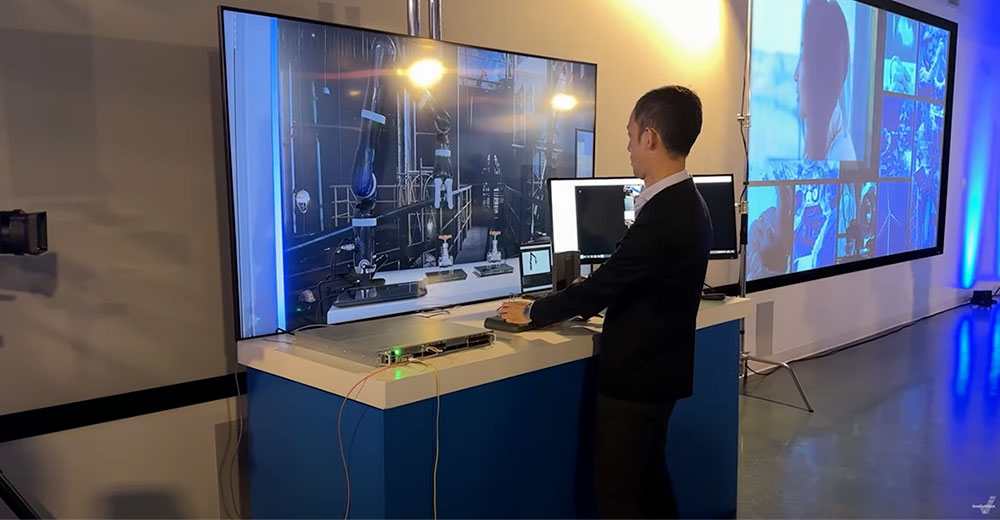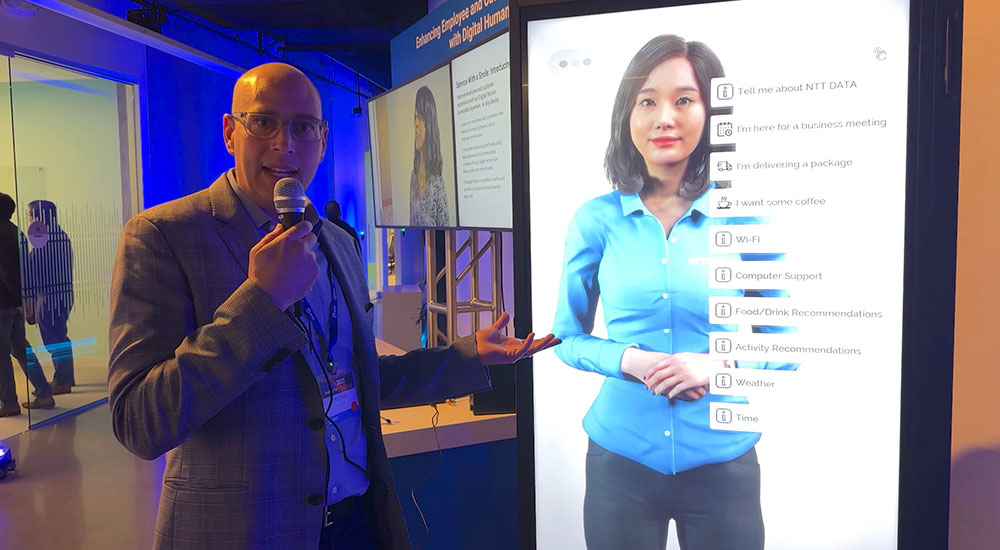
NTT Analysis, a department of conglomerate dad or mum agency NTT, final week introduced that it might broaden the dimensions of its optical analysis heart by 2023.
Throughout its Improve 2023 occasion, the corporate’s technical consumer, buyer, and associate convention in San Francisco, NTT proffered an expansive view of the way it believes networking infrastructure should change. NTT is the grasp company entity in Japan that its analysis arm operates beneath.
The NTT announcement does beg the query for tech trade neophytes who don’t spend their free time hanging round optical analysis amenities, what exactly does an optical analysis facility do?
With out diving deeper into the technical components and superior arithmetic concerned in this kind of analysis, the work’s potential sensible utilized advantages might have a revolutionary influence on community communication know-how as we all know it.
NTT’s work on this space dovetails into the corporate’s announcement earlier this month that it might begin providing company purchasers its preliminary companies using an optical technology-based next-generation infrastructure. NTT introduced on the Improve 2023 occasion that it might cost a month-to-month price of US$15,000 per thirty days (roughly 1.98 million yen) to clients by way of its regional entities, Nippon Telegraph and Phone East and Nippon Telegraph and Phone West.
setWaLocationCookie(‘wa-usr-cc’,’sg’);
This initiative, referred to as IOWN (Revolutionary Optical and Wi-fi Community), facilitates breakthrough “low latency” of the brand new infrastructure system or dramatically decreases transmission time lags. The result’s one-2 hundredth of the related delays in comparison with standard optical communication programs.
In 2019, NTT seeded the concept of IOWN, which entails using optical indicators all alongside the communication line to ship knowledge from the transmitter to the vacation spot. NTT hopes that its IOWN companies, which it’s going to primarily provide to enterprise purchasers, shall be helpful in numerous use circumstances, together with self-driving.
Advantages of the IOWN Initiative
Fiber is the first means of information transmission for current optical communications broadly employed in on a regular basis residential settings. Within the communication path, optical impulses should nonetheless be transformed to electrical indicators and vice versa, which leads to latency or time delays. These delays could also be considerably decreased by IOWN, eliminating the necessity for sign transcoding.
There are a selection of purposes that would exploit this functionality. Self-driving vehicles, remotely operated robots, digital people, and distant surgical procedures performed in distant areas may profit from the low latency that distinguishes IOWN companies.

Digital human interplay know-how demonstration at NTT Improve 2023
At Improve 2023, a compelling demo (pictured above) was proven with a robotic arm getting used by way of controllers to maneuver objects in a simulated warehouse setting that required super precision with nearly zero latency.
To make use of the IOWN companies, clients should use specialised terminal units marketed by Nippon Telegraph and Phone East and Nippon Telegraph and Phone West.
Low latency will not be the one profit offered by the IOWN initiative. The IOWN mission additionally goals to attain low energy consumption with a 100-times enchancment in electrical effectivity over present optical communication programs and a 125-times enchancment in transmission capability.
NTT is making a large dedication to IOWN because it believes its revolutionary advantages will disrupt the networking infrastructure area. Over the approaching years, NTT will work to create particular terminal units and communications know-how to attain these objectives. NTT anticipates implementing the whole IOWN plan within the 2030 timeframe.
Companions Construct Credibility for the IOWN Initiative
The IOWN initiative now consists of many well-known companies from inside and outdoors Japan. As NTT want to see IOWN appeal to as broad worldwide assist as attainable, a worldwide discussion board has been created for evaluating IOWN’s necessities and different technical specifics.
Earlier this month, KDDI Company, one other main Japanese telecommunications firm, was introduced as a brand new member of the worldwide discussion board by NTT. The corporate seeks to collaborate with competing companies to advertise the fast enlargement of the IOWN platform.
NTT has additionally confirmed that it has created a prototype chip that it hopes could at some point considerably enhance knowledge transmission charges in knowledge facilities and underwater fiber optic cables.
setWaLocationCookie(‘wa-usr-cc’,’sg’);
Based on NTT, its brand-new, small baseband amplifier built-in circuit module provides an ultra-broadband efficiency of 100 GHz. Will probably be used with rising all-photonics community applied sciences, comparable to future 6G networks and the IOWN infrastructure. This side is an important element of these future networks, in response to NTT, as a result of they are going to want ultra-broadband sign amplification capabilities to take away all noise distortion.
IOWN core optical networks will be capable of transmit knowledge at charges of greater than two terabits per second; nonetheless, they want a baseband amplifier IC module to amplify the sign. NTT had beforehand created merchandise that would accomplish this, however they have been all massive and required connection to merchandise with exterior knowledge heart block items. NTT has now created a prototype of its module that’s tiny sufficient to suit into any system.
Though the system received’t be commercially obtainable for a number of years, NTT claims it could actually enlarge a 100 GHz electrical sign, a dramatic enchancment over what is feasible with at present’s know-how. NTT believes progress will finally enhance knowledge heart connection speeds and velocity up buyer web entry.
Analyst Ideas
Although NTT will not be an organization broadly recognized exterior of Japan, the 150-year-old firm has a cultural penchant for asking questions concerning the future. With its IOWN initiative, it appears to be difficult the trade to drastically rethink the longer term laptop necessities 25 years from now.
It’s clear that for NTT, photonic optical know-how is the place the puck seems to be going to optimize the conveyance of information. My latest interview with NTT’s World Chief Advertising and marketing Officer, Vito Mabrucco, underscores the dedication that the corporate is making to photonics:
It’s useful to recall that the majority know-how at present depends on electronics to convey and analyze data. Within the post-Moore’s Legislation period, NTT is taking the daring step to push the tech trade to contemplate the way it can enhance computing energy with out a few of the transistor improvement strategies which have spanned the final fifty years. From NTT’s perspective, photonics guarantees to speed up knowledge transmission speeds, improve machine responsiveness, and make the most of considerably much less power.
Furthermore, the positioning of this know-how is across the transition from electronics to photonics. The identical premise holds within the mobile market as 6G will finally eclipse 5G to allow future web and cloud utilization fashions (some not even contemplated). Large knowledge gathering with nearly zero latency shall be attainable in environments with specialised photonics-based processors that may swap workloads autonomously.
Undoubtedly, a completely actuated IOWN-based world will take time and important funding {dollars} to understand. Usually, new technological advances come on the expense of efficiency or power utilization tradeoffs, however this doesn’t look like the case with IOWN. The payoff shall be a brand new game-changing networking topology that may enhance how individuals use every kind of knowledge and the way society features.
Even at that formidable stage, NTT deserves credit score for articulating a daring, new community infrastructure imaginative and prescient that modifications the very nature of computing.

